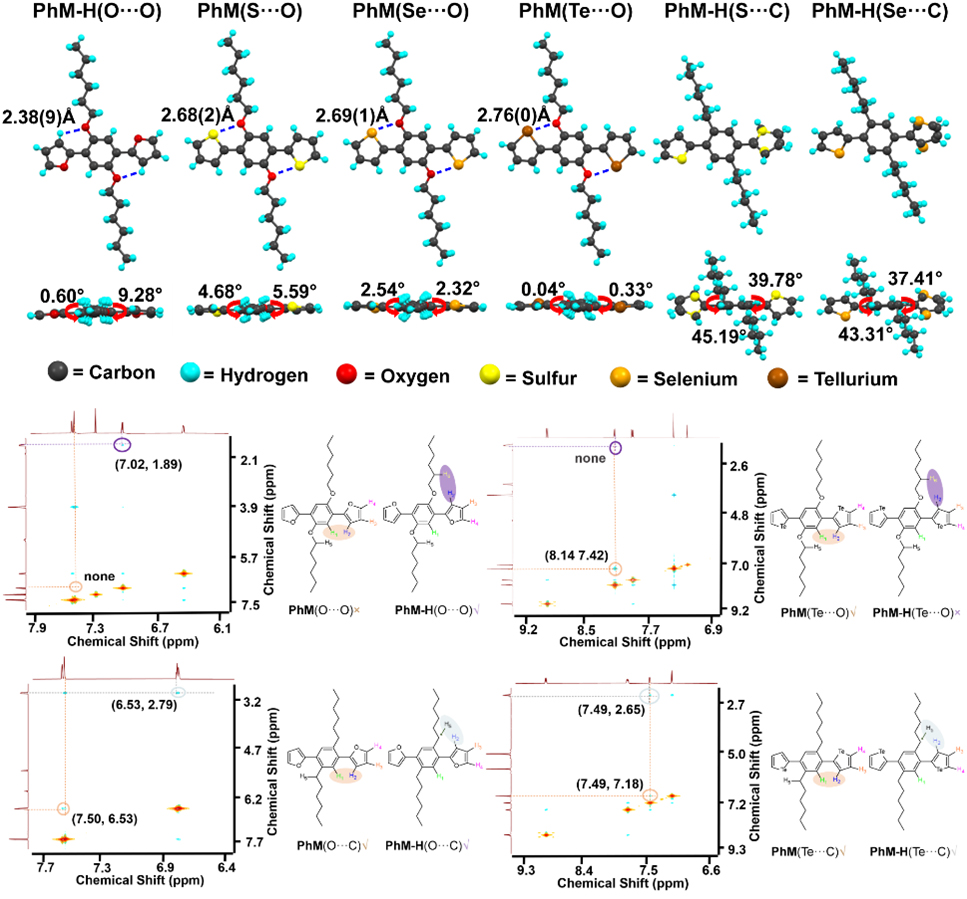Intramolecular noncovalent interactions have become an important means of regulating the optoelectronic properties of organic semiconductors. In 2012, Professor Huang Hui and Professor Tobin J. Marks of Northwestern University jointly proposed and referred to these intramolecular noncovalent interactions as "noncovalent conformational locks (NoCLs)". This strategy has now been widely applied in fields such as organic solar cells, organic light-emitting diodes, organic optoelectronic detectors, and organic field-effect transistors, gradually becoming one of the important strategies for designing high-performance organic semiconductor materials.
Our team has long been committed to basic research on noncovalent "conformational locks" and exploring their applications in the field of optoelectronic materials, achieving a series of important scientific research results published in domestic and foreign academic journals several times (Chem. Rev. 2017, 117, 10291. Adv. Mater. 2017, 29, 1606025. Angew. Chem. Int. Ed. 2020, 59, 15043. 2021, 60, 22, 12475. 2021, 60, 17720. 2023, e202302629. J. Am. Chem. Soc. 2022, 144, 32, 14731.). However, since noncovalent interactions are very weak and diverse, it is very challenging to study the basic principles of conformational locks, and there is a lack of in-depth understanding and direct quantitative relationship between the geometric structure, noncovalent interactions, and optoelectronic properties of organic semiconductor molecules.
Recently, Professor Peng Qian and our team have made new progress in the theoretical development of intramolecular noncovalent interactions. They successfully proposed a molecular descriptor to measure the strength of intramolecular noncovalent interactions and established a close connection with the emission recombination energy and charge recombination energy. In this work, 56 molecules with or without noncovalent interactions were studied, and the results showed that noncovalent interactions mainly came from orbital interactions, revealing the dependence relationship between the nature and strength of noncovalent interactions and the molecular geometric structure. Importantly, they established a molecular descriptor S, which is a function of several geometric parameters and can be easily obtained without any complex quantum chemical calculations, and can well characterize the noncovalent interaction energy in organic semiconductors. More importantly, it exhibited a good negative correlation with emission recombination energy and charge recombination energy, indicating the ability of noncovalent interactions to regulate the luminescence and charge transport performance of organic semiconductors. Especially, they obtained the single-crystal structures of eight new synthetic systems, and 1H, 77Se and 125Te NMR as well as optical absorption and emission spectra fully confirmed the theoretical predictions. This work provides a simple descriptor to describe the strength of intramolecular noncovalent interactions, bridges the gap between molecular structure and luminescence/charge transport performance, and is of great significance for molecular design and property prediction of high-performance organic semiconductors.

Figure 1. Establishment of the descriptor for intramolecular noncovalent interactions and the relationship between recombination energy and the descriptor.

Figure 2. Single crystal structure and NOESY 1H-1H NMR spectra in d2-tetrachloroethane.
This work entitled "A molecular descriptor of intramolecular noncovalent interaction for regulating optoelectronic properties of organic semiconductors" was published in Nature Communications. Liu Meihui, a Ph.D. student at the University of Chinese Academy of Sciences, is the first author of the paper, and Han Xiao, a master's student, is the co-first author of this paper. Professor Peng Qian of the School of Chemical Sciences and Professor Huang Hui of the College of Material Science and Opto-Electronic Technology are the co-corresponding authors. The project was supported by the National Natural Science Foundation of China, the Ministry of Science and Technology, the Chinese Academy of Sciences, and the University of Chinese Academy of Sciences. The University of Chinese Academy of Sciences is the first completion unit.
Link to the article: https://doi.org/10.1038/s41467-023-38078-4


